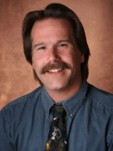
Dr Meier has worked with thousands of adults and children who have sustained an amputation of one or more limbs in his career, which now spans over 40 years. This includes services he has volunteered for, such as working with victims of land mine injuries in warring countries overseas. Dr Meier has truly dedicated his entire career to this field.
One of the authors recruited by Dr Meier is the chairman and Chief Medical Officer of Moss Rehabilitation, Dr Alberto Esquenazi. Dr Esquenazi is himself an amputee due to an accident incurred while he was still in medical school. Dr Meier was Dr Esquenazi’s first rehabilitation physician following his limb loss. Dr Esquenazi later wrote the book on field amputation for the World Health Organization and has gone on to a brilliant academic career himself.
Both Dr Meier and Dr Esquenazi emphasize getting amputees back into life as fully and meaningfully as possible. The basis of achieving these types of positive results comes from a deep understanding of the patient’s personal goals and their relationships to family, friends, and community that existed prior to the amputation.
Among the other esteemed authors is my friend and colleague, Dr Tim Dillingham. Dr Dillingham is currently the chair of the Department of Physical Medicine and Rehabilitation at the University of Pennsylviania and Chief Medical Officer for Good Shepherd Penn Partners. Dr Dillingham brings a vast wealth of knowledge to this project as well, including particular expertise in the etiology and changing demographics of amputation in our world today. Dr Dillingham has published extensively in the area of methodology to improve outcomes for persons with amputations in both acute and postacute settings.
Dr Terrence P. Sheehan, a physiatrist and medical director of Kessler-Adventist Rehabilitation Hospital, brings his expertise regarding the effects of lower limb loss on patients. Dr Sheehan has researched back and hip problems caused by the stress and strain of walking with an improper gait, using prostheses, or using crutches. This can sometimes be more of a problem for lower extremity amputees than phantom pain. Dr Sheehan’s work has helped document that lower-extremity amputation causes a change in the center of gravity, disrupting the biomechanical symmetry of the back and hips. Thus, the muscles and joints of the low back are subject to greater stress, leading to chronic pain.
Drs Uustal and Yoo bring extensive knowledge of prosthetic rehabilitation issues in the diabetic and dysvascular amputee population. Their past work has documented the importance of evaluation and management of diabetic and dysvascular patients with lower limb from the preprosthetic phase all the way through until final prosthetic fitting.
Dr Vigoda and Belon discuss the emotional adjustment to limb loss, which has been a major problem given the nature of injuries our troops have suffered during the conflicts in Iraq and Afghanistan.
Robert S. Kistenberg, MPH, CP, from the School of Applied Physiology at Georgia Technical University, brings extensive expertise on activation in motor-related cortical areas on viewing limb movements and how that may be used to help prosthesis users imitate movements of other prosthesis users to help with motor planning. This has significant implications on how amputee rehabilitation is done and suggests that involving another experienced prosthesis user may help with the adaptive learning process.
I also want to thank all the other distinguished authors, including Drs Varma, Passero, Swanson-Johnson, Heinemann and Ms Karich and Ms Brueckner, for their contributions to this issue of Physical Medicine and Rehabilitation Clinics of North America . It is truly a comprehensive presentation of management of the amputee patient and provides real-life useful recommendations on how to resolve the myriad of problems they can present with. The contributions of these authors to this issue give us a remarkably useful addition to the Physical Medicine and Rehabilitation Clinics of North America series.
Stay updated, free articles. Join our Telegram channel

Full access? Get Clinical Tree






